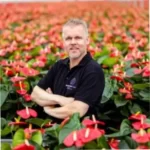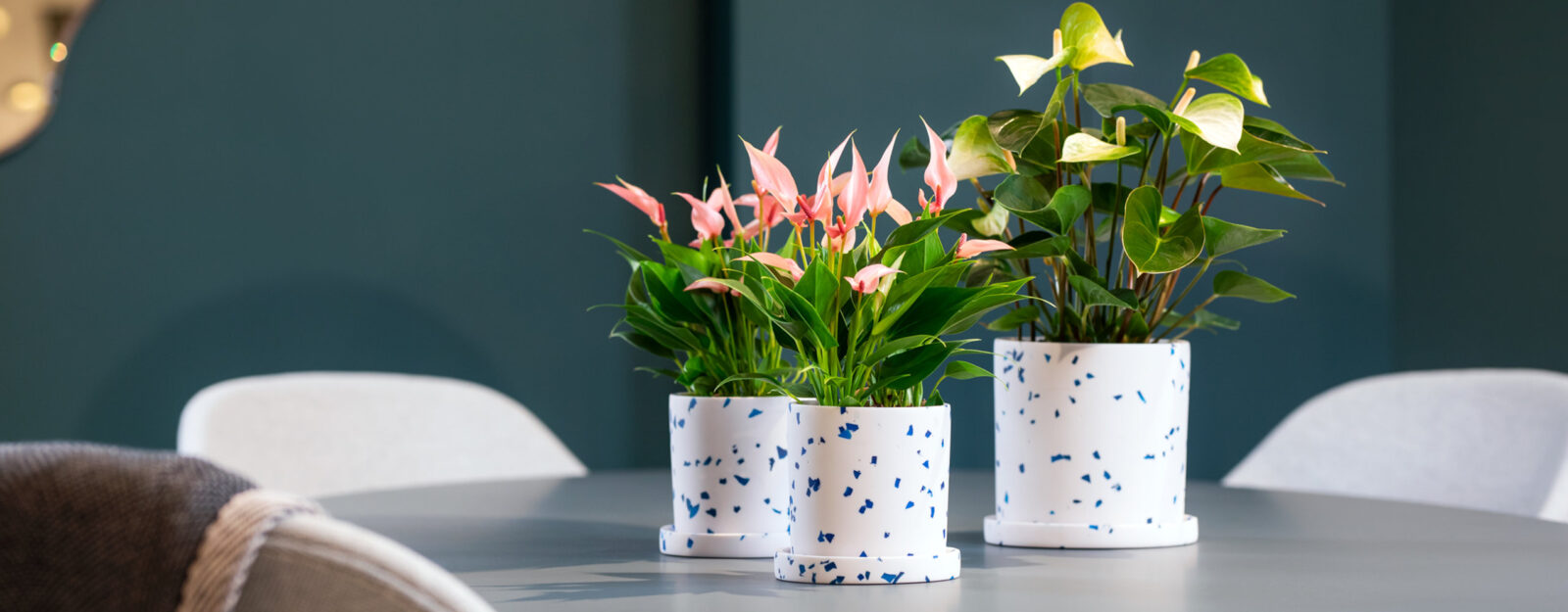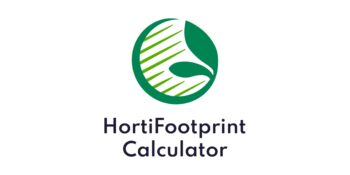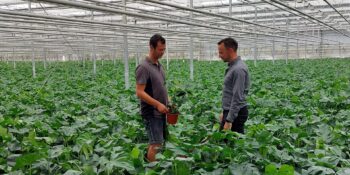Solar panels, LED lights, dehumidifiers and a geothermal heat source illustrate just how committed Groene Tint is to producing sustainably. What’s more, in their 30,000 m² greenhouse they almost exclusively use organic crop protection nowadays – and indeed as little as possible. “We have actually stopped producing some varieties of Anthurium altogether as they were too susceptible to thrips and required too many plant protection,” says Richard van der Salm, Co-Owner and Sales Manager at Groene Tint.

Richard van der Salm, Co-Owner and Sales Manager at Groene Tint
The company behind Groene Tint has been in existence since 1936, having been founded by Nico Groenewegen’s father. A new facility was built in Tinte in 2000 for growing chrysanthemums year-round, and in 2002 Richard van der Salm joined the company as a partner. Having started growing chrysanthemums in 1969, by 2005 they felt the need for a new challenge. So in 2006 they switched to pot Anthurium, a choice that has worked out extremely well for them. “We wanted to continue growing all year round, and Anthurium is ideal for that. And of course it is simply a wonderful plant,” Van der Salm says. Groene Tint now sets itself apart from other growers by offering its customers a wide choice of plants with unique characteristics. “For example, we offer an Anthurium with ribbon-shaped leaves – in fact, we are often asked whether it is a cross with a Spathiphyllum. But it really is a pure Anthurium,” Van der Salm laughs.
Sustainability has been a key agenda item for Groene Tint since day one. Van der Salm: “My father was a rose grower, and he was already filling in the forms for MPS-ABC by hand almost 30 years ago. So as far as we’re concerned, environmental certification is part of what we do.” In terms of plant protection, the company has now switched almost exclusively to biological crop control. “With so many different biological agents available, there is almost always a friendly alternative to chemistry these days.” Since 2022, Groene Tint has also been connected to a geothermal heat source. “We will now be using zero gas between 1 April and 1 October. The geothermal heat will be enough for us then.” The company not only wants to be sustainable in terms of energy, but is also reviewing its packaging. They currently still work with luxury plastic sleeves but are looking at other alternatives that are more sustainable. “We have already done away with the sleeve for our smallest pot size, and we are now asking customers whether they want sleeves around their products or not. A slight disadvantage is that recycled material often doesn’t have the luxury look and feel we are known for. But if we provide an explanation with the plant as to why we are using sustainable materials that have a less luxurious image, I’m convinced the consumer will only appreciate that in this day and age,” Van der Salm says.
At IPM Essen at the end of January, Groene Tint entered the Scan & Win competition on the MPS stand to win a free footprint calculation from the HortiFootprint Calculator, and they succeeded. Van der Salm: “We find it particularly interesting to see how we are doing now compared with two years ago. As far as gas usage and crop protection agents are concerned, we are doing a lot better, but I think there is still room for improvement when it comes to plastic and potting compost. We can then also use that information for MPS-ABC so that we can move a step up from our current MPS-A qualification to MPS-A+. After all, we are fully committed to growing sustainably, so we really need to have A+, I think.”



